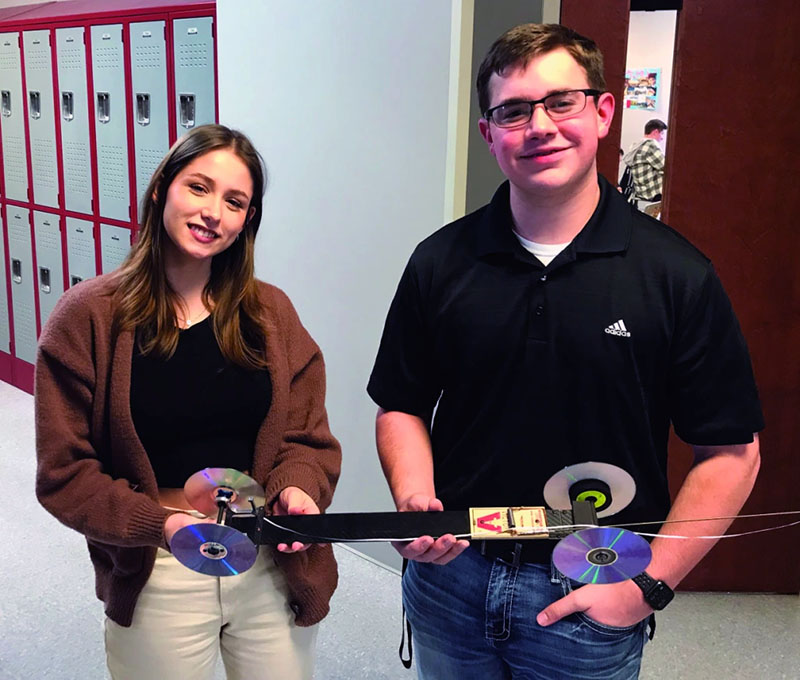March 2, 2023
Races illustrate energy transfer at Gray Stone
By Toby Thorpe
Stanly News & Press

Ainsley Lowry and Jet Miller were the winning team in the Gray Stone competition.
Students in Billy Mills’ engineering-design class at Gray Stone Day School were greeted with an unusual challenge to open the 2023 spring semester.
The challenge? Build a self-propelled mini-car.
The motor? A mouse trap.
The materials?
Students were given a “kit” consisting, in addition to the mouse trap, of a wood base, four wood discs for wheels, bearings and string.
Students could, however, substitute their own materials for anything except the mouse trap motor.
And unlike most races, speed was not the primary objective.
“The distance traveled in a relatively straight line (the width of the GSDS hallway) was the key objective,” said Mills, a part-time instructor at Gray Stone who recently retired from full-time teaching after 30 years at East Rowan High.
Students were paired in two-person teams and were required to submit plans for their vehicles before actually building them.
“There were several goals with this assignment,” Mills said, with the first being socialization.
“We are starting off the semester, and we have students in this class from four counties,” he said.
“This helps everyone to get to know each other as well as requiring teamwork.”
All measurements were done using the metric system, which “prepares the students for use of metric measurements, which are more of a universal system used in engineering applications,” Mills added.
In the end, the project is designed to give students hands-on experience in energy transfer.
“Think about the differential in a regular car or truck,” Mills said. “It converts the power produced in the engine into the rotation of the wheels…it’s the same idea.”
Winning the class competition was the team of Jet Miller and Ainsley Lowry, whose vehicle “far outdistanced” those of the remainder of the class, according to Mills.
Considering that distance, not speed, was the goal, Miller borrowed some ideas from a hobby he and his dad share.
“We race RC (radio-controlled) cars,” Miller said. “Since we could replace anything but the mouse trap engine, we decided to use axles from an RC car, which turn easier than those provided in the kit.
For the wheels, CDs were used instead of wooden discs.
Lowry noted that after first using the string supplied with the kit, she and Miller switched it out for dental floss.
“It was lighter, and didn’t slip as much,” she said, “so it helped with motion.”
Lowry was complimentary of Miller’s grasp of how to convert the energy produced by the release of the mouse trap spring into forward motion.
“He is really good at this,” she said. “I was very impressed.”
Miller, however, credited his RC experience, learned from his dad, as being a key.
“Racing RC cars was an advantage,” Miller said. “It helped us to identify problems and solve them as we put the project together.”
Mills believes strongly that using such projects to give students firsthand experience is a key to helping them understand such mechanical principles.
“We can study theory, but this gives the students a practical application,” he said.